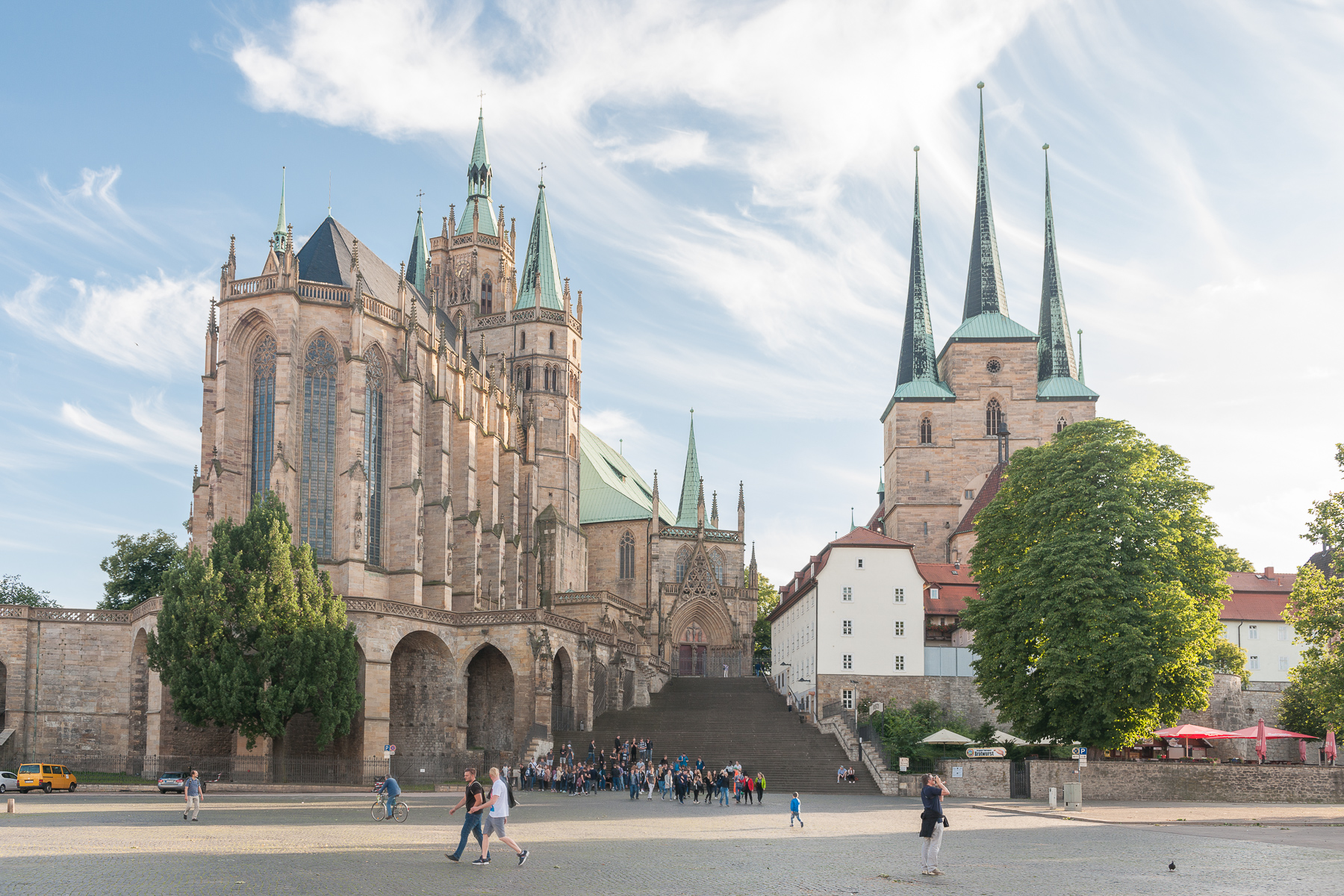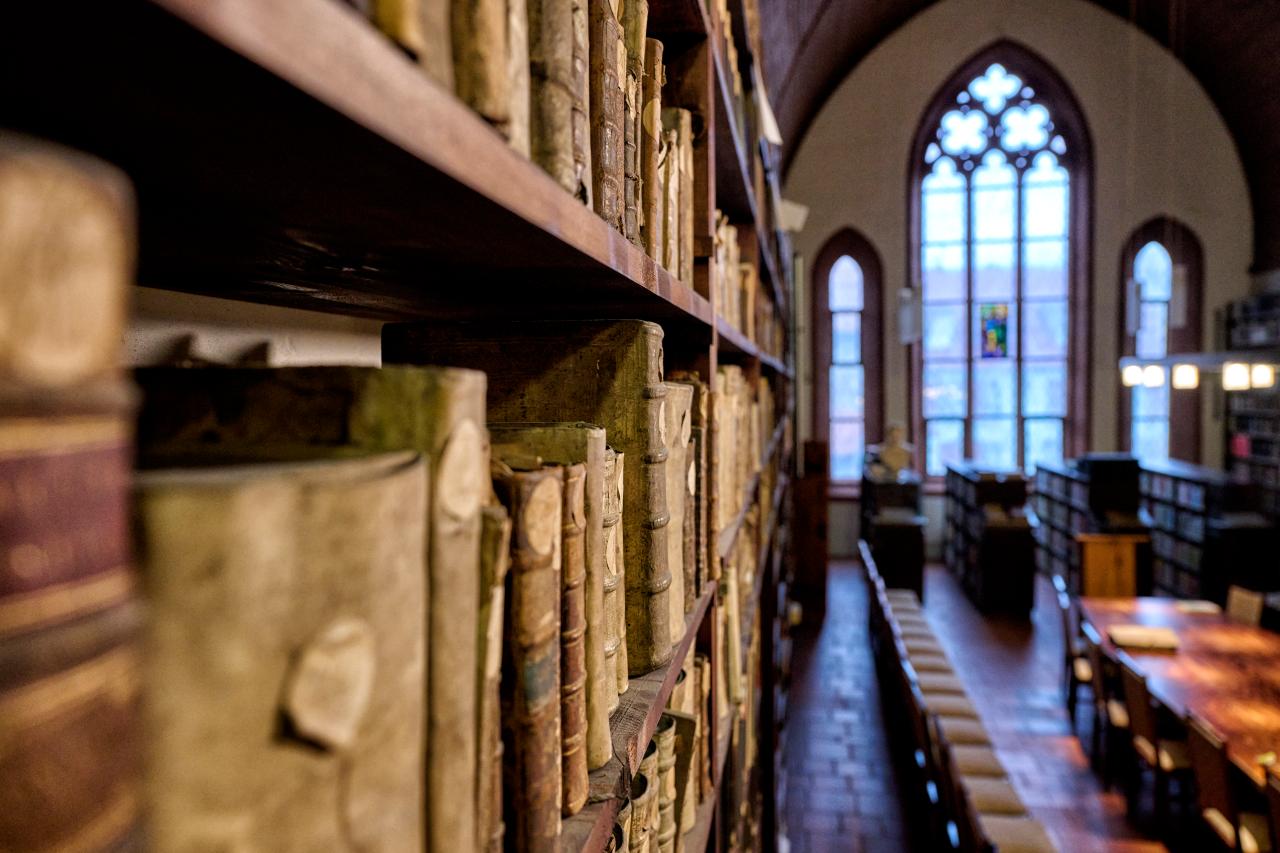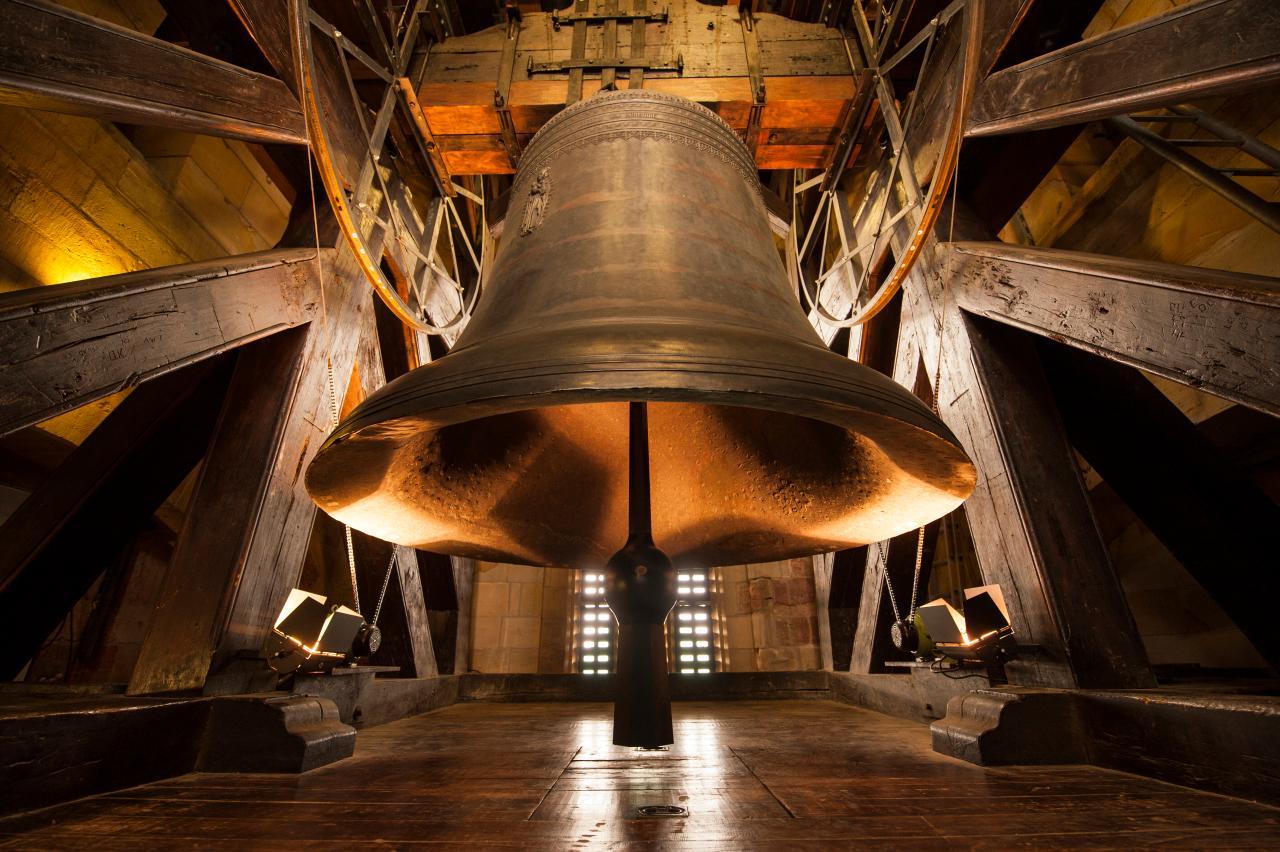
Erfurt
A city straight out of a picture book
The student Martin Luther
When Martin Luther came to Erfurt in 1501, he was probably very impressed by the colourful hustle and bustle of the city. The old trading town had achieved great wealth in the Middle Ages thanks to the blue-colouring woad plant. From 1392, a university made Erfurt also an intellectual centre. Luther stayed in the students’ home ‘Georgenburse’. He attended the student services in St Michael's Church. The Collegium maius, the university's main building, was located directly opposite. The whole setting is still there today. You might expect bumping into Martin Luther as you walk along Michaelisstraße.
The Georgenburse in Erfurt's old town ©Steve Cozort, Georgenburse
Young Martin's student life was probably not only characterised by quiet contemplation. There are reports of wild student parties with strange admission rituals. He was once admitted to the university hospital (now a tavern) because he had "injured himself while practising with his sword". When he completed his basic studies in the "Seven Liberal Arts" in 1505, his path seemed to be mapped out. His father wanted him to become a lawyer. But things turned out differently.
A thunderstorm changes Luther’s course
Supposedly, it happened near the village of Stotternheim. Martin Luther is surprised by a thunderstorm. Full of fear, he gets down on his knees and prays to St Anne to save him. He promises her that he will become a monk. At least that is the story Martin tells his father when he informs him that he will not be studying law. Theology is now the way to go. Friends advise him against it, his father is furious. And Martin remains stubborn. On 17 July 1505, he asks to be admitted to the Augustinian monastery in Erfurt. What follows is history. The monk becomes a doctor at the University of Wittenberg and a reformer of the faith.

Valuable books can be found in the monastery library of the Protestant Augustinian Monastery in Erfurt ©Florian Trykowski, Thüringer Tourismus GmbH
Luther's Erfurt today
The minds of the faithful have meanwhile calmed down in Erfurt. Protestants, Catholics and non-believers celebrate the reformer's birthday together every year on 10 November. They parade through the old town with lanterns and unite on the large square in front of the cathedral for an ecumenical St Martin's Day celebration, on the eve of St. Martin’s Day. Then the Maria Gloriosa, the world's largest free-swinging bell from the Middle Ages, rings out. The large cathedral bell weighs almost 12 tonnes including the clapper. This marvel can be viewed during guided tours in the warmer months of the year. You can only listen to it on high church holidays, on Luther's birthday or on YouTube, of course…

The Maria Gloriosa of Erfurt Cathedral is the world's biggest free swinging bell of the Middle Ages. ©Martin Kirchner, Thüringer Tourismus GmbIn a
TIP: SPEND THE NIGHT AT ERFURT'S AUGUSTINIAN MONASTERY
Header: ©Gregor Lengler / Thüringer Tourismus GmbH










